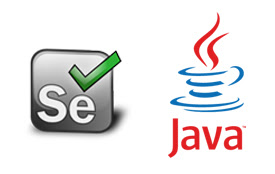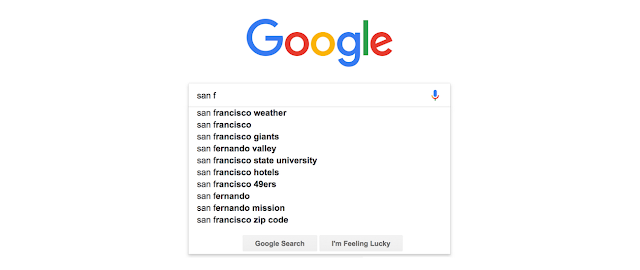Selenium WebDriver Tutorial: Automate Broken Link Detection (2025 Guide)
1. Introduction to Broken Link Testing in Web Automation
Extracting and validating all links on a page is a common automation task. It helps detect broken links, verify navigation flows, and ensure web integrity in smoke and regression testing. In this tutorial, you’ll learn how to use Selenium WebDriver to collect all links on a page, check each one’s status, and handle dynamic or multi‑domain links reliably.
Table of Contents
-
Introduction to Broken Link Testing in Web Automation
-
Understanding Broken Links and HTTP Status Codes
-
2.1 What Constitutes a Broken Link
-
2.2 Critical HTTP Status Codes for Link Validation
-
2.3 Common Causes of Broken Links
-
Server-Side Issues
-
Content Management Problems
-
External Dependency Failures
-
-
-
Complete Selenium Implementation for Broken Link Detection
-
3.1 System Requirements
-
3.2 Step 1: Retrieving All Links from a Webpage
-
3.3 Step 2: Validating Link Functionality with HttpURLConnection
-
3.4 Step 3: Combined Solution for Broken Link Detection
-
-
Advanced Implementation Considerations
-
4.1 Handling Different Link Types
-
4.2 Parallel Link Validation
-
4.3 Reporting and Analytics
-
-
Best Practices for Production Implementation
-
5.1 URL Normalization
-
5.2 Performance Optimization
-
5.3 Error Handling
-
5.4 Integration with Testing Frameworks
-
-
Conclusion and Next Steps
-
Benefits of Automated Broken Link Detection
-
Enterprise-Level Enhancements
-
Related Topics for Further Learning
-
-
FAQs
2. Understanding Broken Links and HTTP Status Codes
What Constitutes a Broken Link?
A broken link refers to any URL that fails to return the expected content to users. These non-functional links typically return HTTP error status codes instead of the successful 200 OK response.
Critical HTTP Status Codes for Link Validation
| Status Code | Description | Implications |
|---|---|---|
| 200 | OK | Link is fully functional |
| 301 | Moved Permanently | URL has been permanently redirected |
| 302 | Found (Temporary Redirect) | URL temporarily points elsewhere |
| 400 | Bad Request | Malformed URL syntax |
| 401 | Unauthorized | Authentication required |
| 403 | Forbidden | Access denied |
| 404 | Not Found | Resource doesn't exist |
| 500 | Internal Server Error | Server-side failure |
| 503 | Service Unavailable | Server overloaded or down |
Common Causes of Broken Links
Server-Side Issues
Hosting service downtime
Database connection failures
Server configuration errors
Content Management Problems
Incorrect URL paths entered during content updates
Page deletions without proper redirects
Case-sensitive URL mismatches
External Dependency Failures
Third-party service outages
API endpoint changes
Expired SSL certificates
3. Complete Selenium Implementation for Broken Link Detection
System Requirements
Java Development Kit (JDK) 8 or higher
Selenium WebDriver 4.x
ChromeDriver (matching your Chrome browser version)
Maven/Gradle for dependency management
Step 1: Retrieving All Links from a Webpage
import org.openqa.selenium.By; import org.openqa.selenium.WebDriver; import org.openqa.selenium.WebElement; import org.openqa.selenium.chrome.ChromeDriver; import java.util.List; public class LinkCollector { public static void main(String[] args) { // Configure ChromeDriver path System.setProperty("webdriver.chrome.driver", "/path/to/chromedriver"); // Initialize WebDriver instance WebDriver driver = new ChromeDriver(); // Navigate to target webpage driver.get("https://example.com"); // Collect all anchor elements List<WebElement> links = driver.findElements(By.tagName("a")); System.out.println("Total links found: " + links.size()); // Process each link for(WebElement link : links) { System.out.println("Link Text: " + link.getText()); System.out.println("HREF: " + link.getAttribute("href")); } // Clean up driver.quit(); } }
Step 2: Validating Link Functionality with HttpURLConnection
import java.io.IOException; import java.net.HttpURLConnection; import java.net.URL; public class LinkValidator { public static void validateUrl(String url) throws IOException { // Create URL object URL link = new URL(url); // Establish connection HttpURLConnection connection = (HttpURLConnection) link.openConnection(); connection.setRequestMethod("HEAD"); connection.setConnectTimeout(3000); connection.connect(); // Get response code int responseCode = connection.getResponseCode(); // Evaluate response if(responseCode >= 400) { System.out.println(url + " - Broken (Response Code: " + responseCode + ")"); } else { System.out.println(url + " - Valid (Response Code: " + responseCode + ")"); } // Close connection connection.disconnect(); } }
Step 3: Combined Solution for Broken Link Detection
import org.openqa.selenium.By; import org.openqa.selenium.WebDriver; import org.openqa.selenium.WebElement; import org.openqa.selenium.chrome.ChromeDriver; import java.io.IOException; import java.net.HttpURLConnection; import java.net.URL; import java.util.List; public class BrokenLinkDetector { public static void main(String[] args) throws IOException { // Initialize WebDriver System.setProperty("webdriver.chrome.driver", "/path/to/chromedriver"); WebDriver driver = new ChromeDriver(); // Target webpage String testUrl = "https://example.com"; driver.get(testUrl); // Collect all links List<WebElement> links = driver.findElements(By.tagName("a")); System.out.println("Scanning " + links.size() + " links on " + testUrl); // Validate each link for(WebElement link : links) { String url = link.getAttribute("href"); // Skip mailto and javascript links if(url == null || url.startsWith("mailto:") || url.startsWith("javascript:")) { continue; } // Validate the URL try { validateUrl(url); } catch (Exception e) { System.out.println(url + " - Error: " + e.getMessage()); } } // Clean up driver.quit(); } public static void validateUrl(String url) throws IOException { HttpURLConnection connection = (HttpURLConnection) new URL(url).openConnection(); connection.setRequestMethod("HEAD"); connection.setConnectTimeout(3000); connection.setReadTimeout(3000); int responseCode = connection.getResponseCode(); String responseMessage = connection.getResponseMessage(); if(responseCode >= 400) { System.out.println("[BROKEN] " + url + " - " + responseCode + " " + responseMessage); } else { System.out.println("[VALID] " + url + " - " + responseCode + " " + responseMessage); } connection.disconnect(); } }
4. Advanced Implementation Considerations
1. Handling Different Link Types
// Filter links by type if(url.startsWith("tel:")) { System.out.println("Skipping telephone link: " + url); continue; } if(url.contains("#")) { System.out.println("Skipping anchor link: " + url); continue; }
2. Parallel Link Validation
import java.util.concurrent.ExecutorService; import java.util.concurrent.Executors; // Create thread pool ExecutorService executor = Executors.newFixedThreadPool(10); // Submit validation tasks for(WebElement link : links) { String url = link.getAttribute("href"); executor.submit(() -> { try { validateUrl(url); } catch (Exception e) { System.out.println("Error validating " + url + ": " + e.getMessage()); } }); } // Shutdown executor executor.shutdown();
3. Reporting and Analytics
import java.util.HashMap; import java.util.Map; // Track results Map<String, Integer> resultSummary = new HashMap<>(); // In validateUrl method: if(responseCode >= 400) { resultSummary.merge("broken", 1, Integer::sum); } else { resultSummary.merge("valid", 1, Integer::sum); } // Print summary System.out.println("\nValidation Summary:"); System.out.println("Valid Links: " + resultSummary.getOrDefault("valid", 0)); System.out.println("Broken Links: " + resultSummary.getOrDefault("broken", 0));
5. Best Practices for Production Implementation
URL Normalization
Resolve relative URLs to absolute URLs
Handle URL encoding/decoding
Remove session IDs and tracking parameters
Performance Optimization
Implement caching for previously checked URLs
Set appropriate timeouts (recommended: 3-5 seconds)
Limit concurrent connections to avoid overwhelming servers
Error Handling
Implement retry logic for transient failures
Handle SSL certificate exceptions
Manage redirect loops
Integration with Testing Frameworks
Generate JUnit/TestNG reports
Export results to CSV/Excel for analysis
Integrate with CI/CD pipelines
6. Conclusion and Next Steps
Automating broken link detection provides significant advantages over manual verification:
Efficiency: Scan thousands of links in minutes
Accuracy: Eliminate human oversight
Consistency: Regular automated checks
Reporting: Detailed analytics on link health
For enterprise-level implementation, consider extending this solution with:
Scheduled monitoring with Jenkins or GitHub Actions
Visual dashboards using Grafana or Tableau
Alerting systems for critical broken links
Integration with SEO tools like Screaming Frog
To further enhance your web automation skills, explore these related topics:
By implementing this comprehensive broken link detection solution, you'll significantly improve website quality while saving valuable testing time. The provided code examples serve as a foundation that can be customized to meet specific project requirements and scaled for large websites.
7. FAQs
- Q: Why do some links have a null href in Selenium?
- Q: Can Selenium alone check HTTP status?
- Q: Should I validate links on every test run?
- Q: How do I handle JavaScript‑generated links?









.png)








